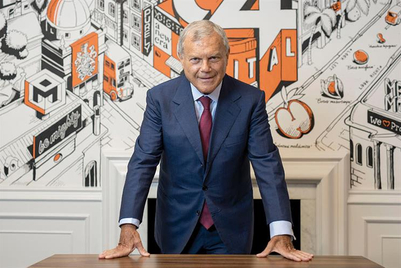
While it is unfair to characterise the main agency holding groups as akin to a flock of sheep whose operational performance tends to be aligned closely, it is fair to say that they tend to perform broadly in the same pattern. That should not come as a surprise. If you accept both views that the agencies are cyclical in nature, and are aligned with the advertising market, and that their services are broadly consistent, then that would make sense. However, it is an assumption that, if it was weakening in the Q1 set of results, was blown asunder by what happened when the companies released their Q2 results.
Out of the six main listed agency groups—Publicis, Omnicom, WPP, Interpublic, Dentsu and Havas —three had profit warnings and downgraded full year guidance (Dentsu, Interpublic and WPP). Yet Publicis actually upgraded its FY guidance after another beating of expectations, Havas’ numbers were robust and, while the markets were somewhat disappointed on the day, Omnicom’s results were broadly in line for Q2 and there was a slight uptick in expectations for the FY top-line.
In the 20+ years I have been covering the agency groups, while there have been differences between the groups, such a wide divergence has been unprecedented—taking the best performing group (Publicis) and the worst performing (Dentsu) in Q2, there was a near 12% difference in the organic revenue performance. It suggests there may be something more fundamental going on in addition to more cyclical factors.
If we look at the comments from the agencies, the weakness of tech clients was mentioned as a consistent factor. It is true that the major tech giants have been spending less (Meta’s marketing expenses were down 12% in Q2), but my view is that the issue may be more complex than seems at first sight.
First, tech is likely to have a broader definition than just the major tech giants. Perhaps a better description would be ‘online born’ companies, which not only cover the major tech giants but also the plethora of online start-ups which, crucially, tend to be categorised not as tech but within their respective genres (e.g. Retail, television etc). The UK’s television advisory body Thinkbox has published research showing that such online born companies grew their advertising spend by 42% in 2021 and constituted 20% of all UK linear TV ad spend. It is probably fair to say that is a reasonable proxy for online companies everywhere. These clients spent heavily up to Q2 2022, when the sudden rise in US interest rates forced many start-up companies to rein in spending.
As a result, it is likely several agency groups—and it will differ by the agency—were impacted significantly by such a cut-off in spend from such clients. Crypto—a big spender in 2020 and 2021— slashed its marketing spend. Streamers (another big category) also cut back. Note that these clients may be listed in their underlying category (e.g. Retail) than as ‘tech’.
Secondly, Publicis—where roughly one third of its revenues come from the Epsilon and Sapient tech businesses—upped its guidance and saw no slowdown in its Q2 organic revenue growth rate from Q1. Those businesses continue to outperform the wider organic group growth rate. On a wider picture however, Amazon, Google and Microsoft all reported better than expected Cloud revenues, which suggests there is not a general slowdown in IT and Tech spend per se (although some of the growth has come off from last year). That would add credence to the idea of many start-ups reining in spend.
Another factor is creative. Again, one of the underlying messages was that creative saw softening in Q2 although areas such as production held their own. Yet, while that was a broad theme across the agency groups, its impact was differentiated. WPP, for example, sees its mainly creative businesses decline 2.3% while the comments from Publicis suggested positive growth. Dentsu was also hit hard. That again would have led to a widening in performance, even if patterns were broadly consistent.
The same goes for media. If there was one (generally) consistent area that was held to be holding up well, it was media, which is critical given its importance to the agencies’ bottom line. Yet, again, there will be differentiations amongst the groups although the general lack of transparency can hinder comparisons. My view is that Omnicom and Publicis benefited from the US weighting of their Media businesses. WPP also put in a robust performance with 6.1% like-for-like revenue growth but was (probably) slightly below the other growth rates, which is likely to be a reflection of geographical exposure more than anything else.
China may also have been an issue. It is fair to say that the Chinese consumer and economic recovery is more tepid than had been anticipated and that has fed into the results of the agency groups. As I have mentioned previously, China is a relatively small percentage of the agency group’s revenues but, for WPP (which is probably the most exposed), it is fair to say its original 2023 like-for-like revenue growth target of 3-5% was dependent on growth in China coming back. That has not happened.
The overall picture then, is that there is no one factor that points to such a divergence but several cumulative ones. Some of these are cyclical in nature (China for example although there may be a structural element). Some reflect relative differences between groups (e.g. on media). However, one or two may be more fundamental (e.g. The switch to more tech-focused services). As we had into 2H, it will be interesting to see whether the gap between the agencies narrows—or even widens.
Ian Whittaker is founder and managing director of Liberty Sky Advisors. He writes a regular column for Campaign about the APAC advertising landscape from a financial standpoint. It is is not investment advice.



.jpg&h=334&w=500&q=100&v=20250320&c=1)
.jpg&h=334&w=500&q=100&v=20250320&c=1)
.jpg&h=334&w=500&q=100&v=20250320&c=1)




.png&h=334&w=500&q=100&v=20250320&c=1)

.png&h=334&w=500&q=100&v=20250320&c=1)



.png&h=268&w=401&q=100&v=20250320&c=1)


.png&h=268&w=401&q=100&v=20250320&c=1)
